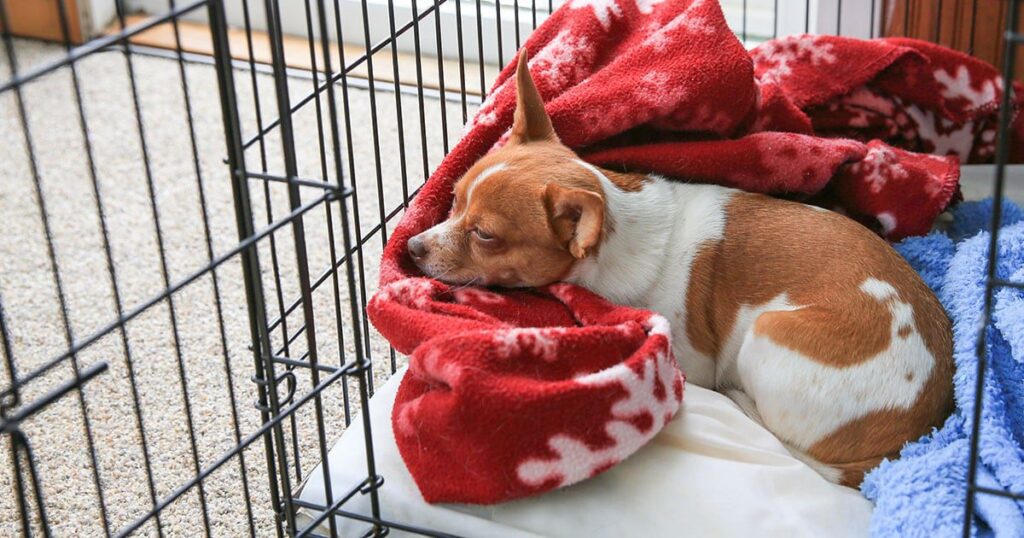By Jill Hedgecock
There are many important reasons to crate train. In fact, it may be a critical first step to set boundaries when training a new puppy. Often the argument against crating a dog is the emotional distress a dog may experience when separated from its family. But, if done properly, it can actually reduce a dog’s stress. Plus, there can be unfortunate consequences if this life skill isn’t taught.

Here are eight good reasons to crate train:
1) It will help minimize accidents during the house-breaking phase, particularly at night. Since dogs don’t like soiling their bedding, they will learn to hold their body waste for longer periods, reducing the time it takes to housebreak them.
2) You could save from spending hundreds of dollars on new furniture, shoes, carpeting, and anything else the little darling sinks its teeth in when you are not at home to monitor.
3) You may avoid a tragedy if a crafty pup is drawn to eating dangerous items like cleaning fluid or even chocolate left accidentally within reach.
4) Your dog will have a safe space to escape from other pets or young children or in sparing allergic or fearful guests from discomfort.
5) Crate-trained pets travel well. Car travel is easier, and even possible for some modes of transportation such as planes or trains.
6) When the dog requires activity restrictions after veterinary care or when going to the groomers, a crate can help prevent a stressful experience for it.
7) As the owner, your anxiety is reduced when leaving the pet alone.
8) Crating mimics the dog’s natural inclination to retreat to a den-like space to sleep and relax. This benefits their mental health.
Even older dogs that are beyond the destructive or housebreaking phase can benefit from adjusting to being inside a crate. Crate training is beneficial to the dog as long as the crate is a proper size, the dog is eased into the experience, isn’t confined for too long of a time, or taught to equate the crate as a form of punishment. Remember to remove a collar with dangling tags if using a wire crate to prevent strangulation.
Crate training must be done properly. Once you purchase the appropriate crate size, start the introduction process by placing the crate in an area where the family is hanging out. Prop the door open so the dog can come and go. Some pups may naturally prefer to sleep in the crate. Make the crate experience positive by giving the dog treats when it enters. Playful dogs may enjoy a game of tug inside the crate or throw a ball inside to initiate a game of fetch. Then start shutting the door for short periods, and gradually lengthen the time. Remember to be patient and aim for the long game.

